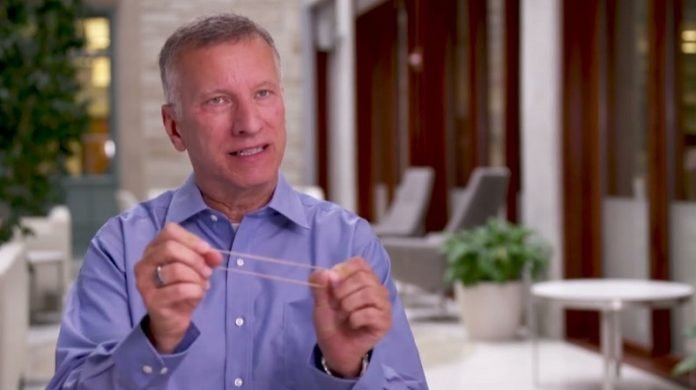
Despite research and policy efforts, recycling initiatives have skidded on more complex materials like tires and mattresses, filling dumps and natural land across the country.
Now, Northwestern University researchers have used simple chemistry to address long- standing barriers associated with recycling about a quarter of today’s plastics — materials that hold a tremendous amount of embedded energy.
professor John Torkelson will present on seven novel techniques to transform tires and other similar thermoset polymers into recyclable materials at the American Physical Society (APS) on March 14.
His lab’s breakthrough research builds on excitement in the sustainability field and will help mitigate fires, pollution and the lost economic value associated with synthetic polymer waste.
“This is our case of looking at a class of materials that were considered hopeless in terms of recycling,” Torkelson said.
“And using one- or two-step chemistry to transform them into recyclable material with full recovery of properties to see how that can really help address some major issues with regard to sustainability.”
Synthetic polymers and plastics come from chemical reactions of monomers (molecules made up of single units) — for example, ethylene makes polyethene, which could be used for something like a milk jug.
Materials like milk jugs, called thermoplastics, can be recycled and melted down to create new products easily.
Tires and many other polymers make up a class of materials called thermosets, where the long polymer chains are permanently crosslinked. Crosslinked rubbers cannot be melted down and recycled into new products because of these permanent crosslinks.
But the Torkelson research group has found several ways to create a new type of crosslink called dynamic covalent crosslinks.
Such crosslinks create robust crosslinking at conditions they’re used for yet allow materials to melt at high temperatures (ie., at 280 degrees F, much hotter than a temperature a normal car tire faces).
Then, when the recycled polymer is cooled again, Torkelson says crosslinks come back together just as strong, with the same properties as before.
“We’ve been able to effectively transform the thermosets into thermoplastics for recycling,” Torkelson said. “We can make crosslinks that are just as robust as regular crosslinks at use temperatures, but at high temperatures, they come apart temporarily.”
Researchers face an uphill battle when trying to address problems with entirely new materials, including trying to convince manufacturers to reinvent their literal and figurative wheel by adopting practices that may balance out years later.
Torkelson’s solutions involve chemical reactions to existing materials, taking many steps — and years of development and implementation — out of the equation.
His presentation will highlight success in synthesizing addition-type polymers, which are used to make car tires; step-growth-type polymers, with applications including foam mattresses and insulation; and sister crosslinked polymers, made without toxic compounds so a highly viable material for recycling.
Torkelson also will present a potential solution to an “Achilles’ heel” associated with reprocessible polymer networks.
Written by Win Reynolds.



